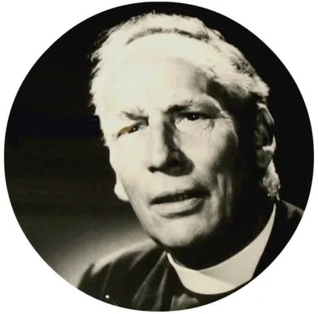
The Church of North India (CNI) is the dominant united Protestant church in northern India. It was established on 29 November 1970 by bringing together most of the Protestant churches working in northern India. It is a province of the worldwide Anglican Communion and a member of the World Methodist Council and the World Communion of Reformed Churches. The merger, which had been in discussions since 1929, came eventually between the Church of India, Pakistan, Burma and Ceylon (Anglican), the Methodist Church, Disciples of Christ, and some congregations from the United Church of Northern India.

The Church of Bangladesh is a united Protestant church formed by the union of various Protestant churches in Bangladesh, principally the Anglican and Presbyterian denominations. The Church of Bangladesh is a member of the Anglican Communion and the World Communion of Reformed Churches.
The Diocese of Calcutta was established in 1813 as part of the Church of England. It is led by the Bishop of Calcutta and the first bishop was Thomas Middleton (1814–1822) and the second Reginald Heber (1823–1826). Under the sixth bishop Daniel Wilson (1832–1858), the see was made Metropolitan when two more dioceses in India came into being.

The Church of the Province of Myanmar in Asia is a member church of the Anglican Communion. The province comprises the entire country of Myanmar. The current archbishop of Myanmar and bishop of Yangon is Stephen Than Myint Oo.
Jonathan Holt Titcomb was an English clergyman and the first Anglican bishop of Rangoon.
The Diocese of Mumbai of the Church of North India is the Anglican diocese covering metropolitan Mumbai and the state of Maharashtra. The cathedra seat of the Bishop of Mumbai is St. Thomas Cathedral, Mumbai.

The Church of Ceylon is the Anglican Church in Sri Lanka. It is an extraprovincial jurisdiction of the Archbishop of Canterbury, who serves as its Metropolitan. It was established in 1845 with the appointment of the first Anglican Bishop of Colombo, James Chapman and until 1950 it consisted of a single diocese; in that year a second diocese was established at Kurunegala.
The Bishop of Lahore was the Ordinary of the Church of England in Lahore from its inception in 1877 until the foundation of the Church of India, Burma and Ceylon in 1927; and since then head of one of its most prominent Dioceses. Since 1970, the diocese of Lahore has been a part of the Church of Pakistan, a United Protestant denomination.
Most Rev. Lakdasa Jacob De Mel (1902–1976), MA was the first Bishop of Kurunegala, Sri Lanka and the last Metropolitan Archbishop of India, Pakistan, Burma and Ceylon.

George Frederick Appleton, was an Anglican bishop in the third quarter of the twentieth century and a writer.
Kyar Ba Nyein was the Burmese Lethwei fighter and boxer who participated in boxing at the 1952 Summer Olympics and was a pioneer in modernizing Lethwei. Ba Nyein started boxing at the age of 13 and fought in about 50 matches over 20 years until retiring from fighting at the age of 33.
Francis Ah Mya was an Anglican Archbishop in India and Burma in the mid-20th century.
John Aung Hla was an eminent Anglican priest in the 20th century.
Aurobindo Nath Mukherjee, officially The Most Reverend Aurobindo Nath Mukherjee, was an Indian and Bengali speaking leader of the erstwhile Anglican denomination, known as the Church of India, Pakistan, Burma and Ceylon (1948-1970), which merged with other Protestant denominations to form the Church of North India. He was the fourteenth Bishop of Calcutta and the tenth Metropolitan of India. He was also the first Indian to be either the Bishop of Calcutta or the Metropolitan of India.

The Church of India, Burma and Ceylon (CIBC) was the autonomous ecclesiastical province of the Anglican Communion, associated with the Church of England, in British India.

The Diocese of Colombo is based in Colombo, Sri Lanka. The diocesan bishop's seat is Cathedral of Christ the Living Saviour. The current bishop of Colombo is Dushantha Lakshman Rodrigo.

John Richardson was an Indian Anglican bishop and politician.

Thiri Pyanchi Ba ThanFRCS FACS FICS was a Burmese medical surgeon, educator and administrator. The first Burmese police surgeon in British Burma, Ba Than founded and ran the main hospital in Rangoon (Yangon) as well as the wartime medical and nursing schools during the Japanese occupation of the country (1942–1945). After the country's independence in 1948, Ba Than served several terms as dean and rector of the main medical universities in Rangoon and Mandalay until two months before his death in 1971.
Thiri Pyanchi Min Sein was a Burmese physician, educator and administrator. The first Burmese dean of the Faculty of Medicine of Rangoon University in British Burma, Min Sein was one of the small group of senior physicians that rebuilt and expanded the country's medical education system from the ground up after the country's independence in 1948. He served as the dean of the medical school four times between 1947 and 1959, and led the Burma Medical Research Institute, the Burma Medical Association and the Burma Olympic Committee.









